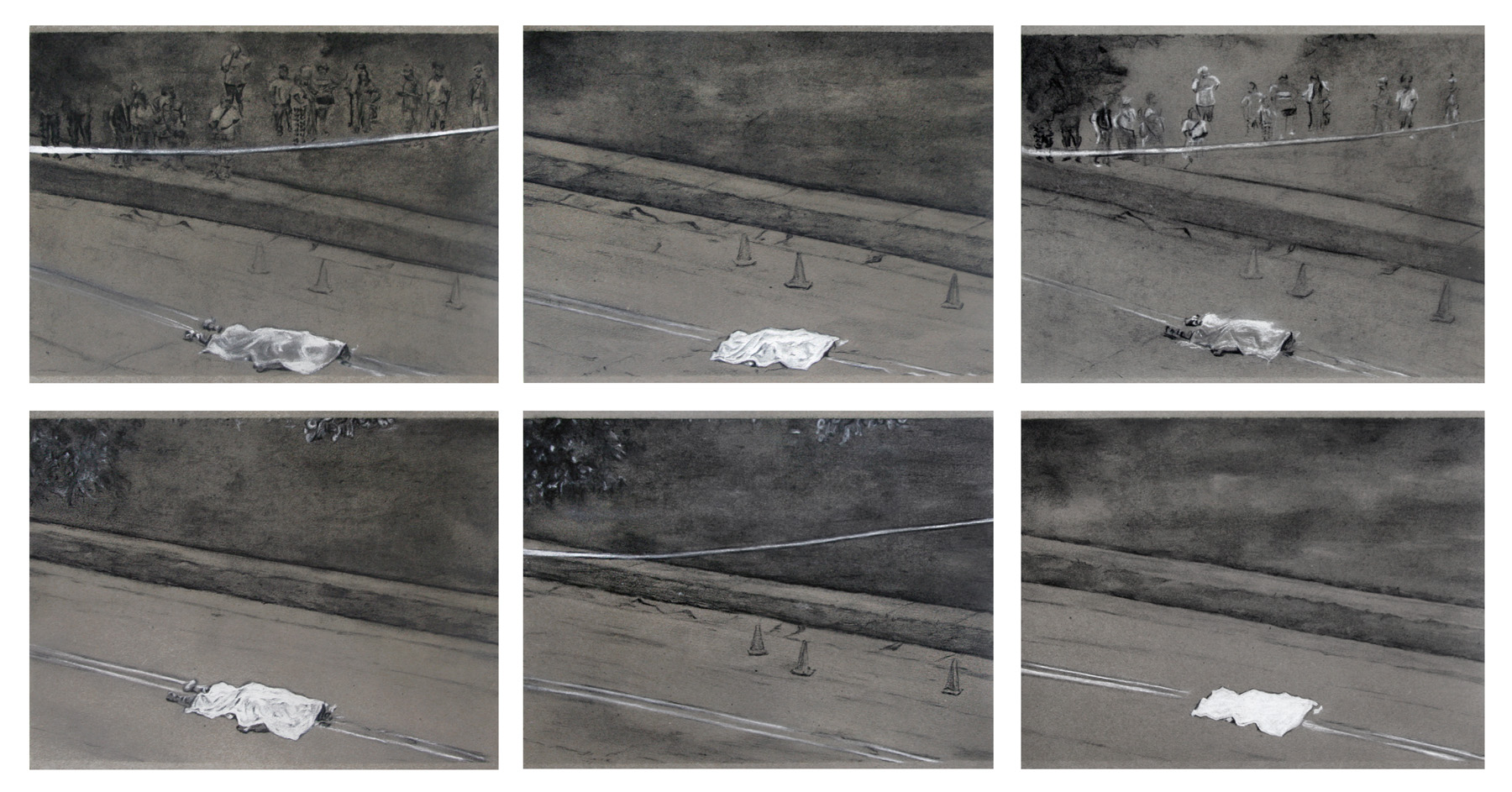I am an invisible man. No, I am not a spook like those who haunted Edgar Allan Poe; nor am I one of your Hollywood-movie ectoplasms. I am a man of substance, of flesh and bone, fiber and liquids — and I might even be said to possess a mind. I am invisible, understand, simply because people refuse to see me. Like the bodiless heads you see sometimes in circus sideshows, it is as though I have been surrounded by mirrors of hard, distorting glass. When they approach me they see only my surroundings, themselves, or figments of their imagination — indeed, everything and anything except me.
Ralph Ellison, The Invisible Man, 1952
Can invisibility perform as a site of negotiation?
Existing as unseen and unrecognized suggests societal or political weakness. But can this transparency promise agency—allowing one to co-opt invisibility as a strategy of deception or cloaking? If racial projections require opacity in order to take hold, then how does one resist them? Being transparent in the world can have its advantages: manipulating perceptions of one’s identity enables a person to navigate life with possibility, if not power. Learned behaviors—performative code-switching—can be manipulated in order to deny visual legibility while psychologically regaining ownership of the self. This knowledge/control generates space to move safely and boldly through the world.
In the hands of an artist, strategies of invisibility may be employed in order to bring awareness to those elements which are absent. Not as neglect, but as extraction, such removal points to a process of erasure that is a means as opposed to an end. Areas omitted from the visual field can invite a contemplative reading in the form of focusing the viewer’s eyes on information that would otherwise go overlooked.
Ultimately, however, invisibility is not a choice, as our nameless narrator clarifies above. It is painfully imposed on certain bodies not simply as a refusal to acknowledge them but also as a negation of their humanity. The image of the body of a young black man, Michael Brown, left in the streets for 4 hours provides a most heart-wrenching example. I don’t speak here of the invisibility of a body cloaked in a white medical sheet. I speak of a life of invisibility—the counterpoint to the oppressive hyper-visibility of racial stereotype that Ellison describes—which denies dignity even upon death. I wonder what people see when confronted with the image of Michael Brown’s body as it circulates in the press. Where do our eyes stop in this picture plane? I’m less concerned with the duration of someone’s looking and more with where the eyes actually move—how and what we implicitly and selectively choose to view. Where and when do we allow questions to emerge from what is right in front of our eyes but invisible to our consciousness? Do we spend any time at all, for instance, considering the crowd of spectators, their cell phones, their decision to stay or leave? I personally cannot help but see Michael’s sneakers peeking out from underneath the white shroud—the only remnant of Michael’s interests, tastes, personality. I know those sneakers. Does this knowledge permit me to call him Michael? What aspects of “his” environment do we mentally hold onto—the haphazard traffic cones, the aged cracks in the pavement, the electrical cable swaying above? What disappears? Maybe we need space, literally and metaphorically, within the frame to contemplate this image further… to sit with the trauma. Maybe we need to first see this street as nothing other than a street – as an everyday place. Might that slow process of observation turn our looking into witnessing?

